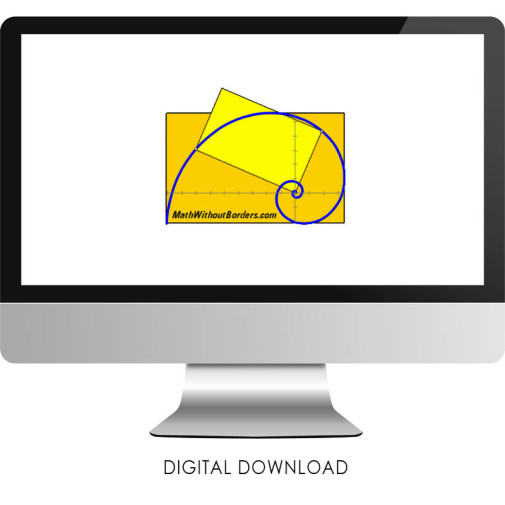We use cookies to make your experience better. To comply with the new e-Privacy directive, we need to ask for your consent to set the cookies. Learn more.
Home Study Companion for Non-Calculus-based Physics Digital Download
Physics – Non-Calculus-Based Physics, to be exact – is new to the lineup of Math Without Borders Homeschool Companion courses. Physics is the practical application of math principles so it is a natural extension to upper level math classes. Teaching “Newtonian Physics,” it introduces the conceptual framework laid down by Sir Isaac Newton. The task is to understand the physical world not just textbook problems. The course structures the lab components – those activities that help the student observe and interact with the intricacies of the physical world – as projects, a method particularly suited to the homeschool. Course components include digital access to video presentations, plus Schaum’s Outline of College Physics. Several math courses are prerequisites for this physics course: algebra 1 and 2, geometry, and trig. It can be done alongside either calculus or precalculus but does not require either.
The course projects require a collection of tools. Economical ways of obtaining these are outlined in a document available on our website at the course listing. The list includes: a scientific calculator (author has suggestions for acceptable units), GeoGebra (a free program used with other Math Without Borders courses), a spreadsheet program, a free software program called Tracker, some enhancements for your cell phone camera, metric measurement tools, and a gizmo called Pocket Lab (somewhat expensive and a good tool but not essential).
Pair a well-loved high school math series (Foersters) with video instruction and you have a winning combination. Math Without Borders Home Study Companions provide an element of confidence; the conviction that a challenging high school math course is completely manageable. Why? You have a teacher in your corner. One who calmly and clarifyingly teaches math. Initially programs were on thumb drives, but all have transitioned over to digital downloads. The videos provide electronic whiteboard presentations to accompany the textbook lessons plus worked solutions to selected assigned problems.
The Paul Foerster math courses are considered an excellent choice for college prep math, but were not as readily available. Sometimes, it was even hard to get an answer key. David Chandler and Math Without Borders changes all that. These excellent courses (the geometry uses "Geometry: A Guided Inquiry") provide a quality, college-prep, high school scope and sequence and they are do-able in a homeschool setting even if mom is a mathophobe.
The idea is to read the day's lesson, then watch the video. Use half of the lesson problems as a daily assignment; use the remainder if additional practice is needed. The Math Without Borders videos include explanatory videos plus worked problem solutions for either select problems or the even problems. These solutions can be used to get over a roadblock. Many of the courses include a Resources File which provides spreadsheets and material referred to in the lessons.
Each course includes material on how to set up the course, what texts to use and how to use them, as well as links for obtaining suggested free software downloads. Some courses include printable pdf material.
Although a mentoring approach to assessment is encouraged, Mr. Chandler does provide suggestions for material that can be used as self-tests or assessments. ~ Janice
Algebra I text is Algebra I: Expressions, Equations, and Applications by Paul Foerster (Prentice Hall Classics edition). The odd-numbered problems have answers given at the back of the book (use these for homework). Lessons are useful with older editions of the text.
Geometry text is Geometry: A Guided Inquiry by Chakerian, Crabill, and Stein. (several publishers and different printings but all with identical content). Demonstration files from the lessons require a free program Geogebra - (available as download).
Algebra 2 with Trigonometry text is Algebra and Trigonometry: Functions and Applications by Paul Foerster (Prentice Hall Classics edition). Mr. Chandler notes that trigonometry is rarely taught as a separate course anymore but rather paired with either Algebra 2 or Precalculus. Paul Foerster includes it in both courses. Math Without Borders strongly suggests that taking both courses (don't skip the Precalculus course) is recommended because work leading up to calculus is foundational for later math courses and mathematically based professions. Lessons are useful with older editions of the text.
Precalculus text is Precalculus with Trigonometry: Concepts and Applications, 3rd ed. by Paul Foerster (copyright 2012). Lessons are useful with older editions of the text.
Calculus text is Calculus: Concepts and Applications, 2nd ed. by Paul Foerster (copyright 2005). Lessons are useful with older editions of the text. Non-Calculus Based Physics text is Schaum's Outline of College Physics (12th Ed.)
| Product Format: | Other |
|---|---|
| Brand: | Math Without Borders |
| Grades: | 10-12 |

